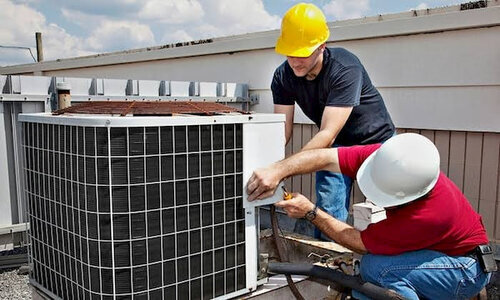Have you ever been unfortunate enough to spend a summer with a malfunctioning air conditioner in your home that even your air conditioner installers are failing to figure out? If yes, then you would know it is next to impossible to sleep with sweat dripping off your body!
Never compromise on the comfort of your home. You do not need to go for a new air conditioner installation or call an AC replacement company, certain problems you can identify and rectify on your own or through a repair person.
Top Air Conditioner Problems
1. Low Levels Of The Refrigerant
The refrigerant is the liquid that gets rid of the heat and humid air from the room to replace it with cooler air. If there are leaks in this refrigerant, then its amount would significantly decrease, as a result decreasing the efficiency of your air conditioner.
2. The Evaporator Coils Are Frozen
The evaporator coil is the area where the refrigerant is stored and absorbs the heat from the environment. It kind of operates like a sponge. These coils require warm air to function properly. If they get frozen, the functioning of your air conditioner is affected.
3. The Condenser Coils Are Full Of Dirt
The condenser coils are installed in the outdoor unit and remove the warm air from the surroundings by pushing it out of the building. So, these coils cannot function properly if there is dirt accumulated on them.
4. Issues With The Fan
The fan gushes the air indoors to the outdoor evaporator coil in order to reduce the temperature of this air. There is a second unit that pushes the air on the outdoor unit to get rid of the heat to the exterior environment.
So, if the fans are not functioning properly due to issues with the moto, lack of oil, worn-out parts, and accumulated dirt, then the resultant airflow will be severely affected.
5. Leaks From The Ducts
The ducts are inside the walls of the rooms and the ceilings. These ducts carry the cool air from the AC unit to the living space.
But, if there are holes and leaks in these ducts, then the cooler air will stay ins your walls where it is of no good. The room would still remain warm.
6. Issues With The Thermostat
If you have an old AC unit that has manually operated thermostats, then the chances are that they will be improperly calibrated. But this will give incorrect instructions to your AC unit, affecting its functioning.
You can troubleshoot this by replacing your thermostat or recalibrating it. But if you have advanced thermostats, then it will be difficult to recalibrate them without the assistance of a professional.
How To Troubleshoot Air Conditioner Issues?
1. Change Your Air Filters
If your air filters are clogged with dirt, then the AC’s coils will get frozen. So make sure you change these clogged filters.
2. Repair Leaks & Holes In Your AC Ducts
If you feel that your energy bills are skyrocketing or there is insufficient air coming from your AC, then it is time to inspect the ducts and conduct the necessary repairs.
3. Get A Digital Thermostat & Learn How To Calibrate It
Get rid of the obsolete thermostat systems and replace them with digital ones. However, the latter ones are precisely calibrated and help you save your energy bills. There are thermostats available used through your smart devices.
4. Do not neglect your outdoor unit; clean out the accumulated dirt and debris
If your AC’s condensers and fans are blocked with dirt and debris, they will be unable to push out the hot air efficiently. Therefore, make sure your outdoor unit is free of dirt.
5. Do not skip the timely professional maintenance
The truth is that many air conditioner issues are easily prevented if you do not skip the professional yearly maintenance. So, hire an HVAC expert, air conditioner installers, or a humidifier replacement company to inspect the health of your air conditioner and do the necessary repairs if need be.
Though hiring some professional air conditioner installers is not too expensive and you will save yourself from the hassle of calling an emergency repairman if your AC malfunctions.
Also Read: Top Essential Factors for Roof Repairs Procedures





